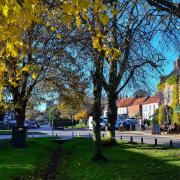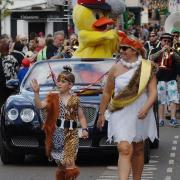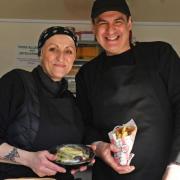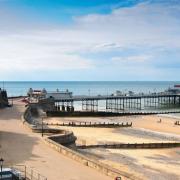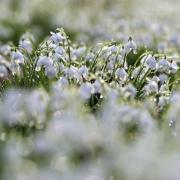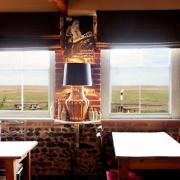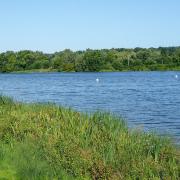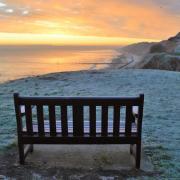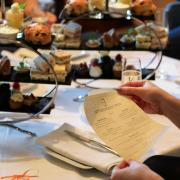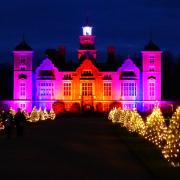Golden sands, silver darlings, candyfloss and rock, festival fun, white-knuckle thrills and a heady cocktail of sun, sea and history are just some of the great things about Yarmouth

1. Fish, and other treasures from the sea
Before the golden mile came the silver darlings. That was the name given to the vast shoals of herring caught here. And as the holidaymakers flocked here, so did the herring. When the summer visitors left, the autumn shoals arrived and in the 19th century Yarmouth became the largest herring port in the world – with more than two million fish once said to have been landed on a single tide. They were exported across Britain – and as far as Russia, Africa and India. The herring has gone, but there are more riches from the sea. North Sea oil and gas brought jobs from the 1960s and now huge offshore wind farms harness energy for the country and work for townspeople.

2. But if it’s a superlative you are searching for, Great Yarmouth is the place to come

It boasts the largest parish church in England (St Nicholas Minster), one of the largest market places in England and the second most complete town walls in the country. Docwras Rock Factory proclaims itself the world’s largest rock shop, Palmers is one of the oldest department stores, every ride of the historic wooden roller coaster is unique, thanks to the brake-man who rides each train, and the Hippodrome is Britain’s only complete circus building.
When it was opened, more than a century ago, the lavish Hippodrome was called: “Undoubtedly the finest palace of entertainment in Great Britain.” It is still a wonder of the entertainment world, hosts world-class shows – and has an extraordinary extra trick of its own involving a very watery transformation.

3. There are at least five festivals in Yarmouth in September alone
As well as the festivals of bowls and racing, there is the Maritime Festival on September 8 and 9 including the chance to board lots of boats, see museum ships, tall ships, a motor torpedo boat, a minesweeper and more. Enjoy entertainment ranging from sea shanties to the chance to meet a costumed Admiral Lord Nelson.
The Out There Festival of international street arts and circus takes over the town from September 14-16. Acrobats, dancers, music, circus, comedy and more take over St George’s Park and the Market Place for the mostly free festival of street entertainment.

The Yarmonics festival of sonic arts promises live electronic music, improvisation and performance on September 21 and 22 at St George’s Theatre.
4. National sporting venue

More than 1,000 people take part in the biggest outdoor open bowling competition in the country on Yarmouth seafront every September. The Great Yarmouth Festival of Bowls, at the beautiful Britannia Bowling Greens, brings the best bowls players in the country to the town. It’s from Sunday August 26 to Friday September 21 this year – with plenty of free seafront seating for spectators.
Just to the north of the town is Great Yarmouth Racecourse. Yarmouth has held horse races for at least 300 years. In the early years these included the ‘sport’ of trying to catch a pig with a soapy tail. It’s all much more traditional now. The racecourse will be hosting the Eastern Festival of Racing from Tuesday September 18, when around 15,000 people are expected for the three-day festival.
5. Past glories and stories, and how Yarmouth wasn’t always quite so great
The Time and Tide Museum takes over a Victorian herring curing works to tell the story of Yarmouth, including shipwrecks, fishwives and saucy postcards. You can still smell the fish in the timbers. Another Yarmouth museum, the Elizabethan House, is said to have been where the execution of Charles I was plotted.
Yarmouth-born sisters Rebecca Nurse and Sarah Cloyce were hanged as witches in Salem. They had left the town as children in 1637 and settled in the New World. More than 50 years later, as allegations of witchcraft and sorcery swept the community, both were accused and convicted of black magic and hanged. Twenty people were executed before the hysteria calmed, jurors apologised and surviving relatives were awarded compensation.
In 1845 spectators crowded on to a suspension bridge to see geese pulling a clown in a barrel down the river. The bridge collapsed, killing 79.
6. Forget Trafalgar Square, the original Nelson’s Column is in Yarmouth
Whether you call it Nelson’s Column, the Norfolk Naval Pillar, the Britannia Monument or Nelson’s Monument, this tribute to the great Norfolk-born admiral was completed 24 years before the famous London monument – and marks its 200th anniversary next year. It shows Britannia standing on a globe at the top of the tower. On open days visitors can climb the 217 steps to the top of the monument. Designer William Wilkins was also the architect of the National Gallery in Trafalgar Square, where an even taller monument to Nelson was eventually built.
7. What’s not to like about a place built for fun?
As a holiday town, Yarmouth fizzes with fun. It’s in the names of its seafront attractions – Pleasure Beach, Joyland, Merrivale; its in the vast sandy beach itself, the two piers, the Venetian waterways being restored to their former glory; it’s in the extravagant architecture including a fake windmill, the spectacular Hippodrome Circus and grand seafront hotels.
8. A fine place for writers
Peggotty, in Charles Dickens’ semi-autobiographical David Copperfield, called Yarmouth ‘the finest place in the universe’ and Robinson Crusoe author Daniel Defoe said the South Quay was the ‘finest in England if not the world,’ and described Yarmouth as older, better-built, more complete and for wealth, trade and situation, infinitely superior to Norwich. George Borrow (he of the ‘Norwich is a very fine city’ quote) lived here and Black Beauty author Anna Sewell was born in Yarmouth in 1820. In the 21st century author Harry Brett conjures a darker, grimmer Yarmouth in his popular gangster crime series.
9. And finally… why is it called Great Yarmouth?
More than 700 years ago there were two settlements known as Yarmouth, at either side of the mouth of the river Yare, which were eventually distinguished from each other by calling the biggest one Great and the smallest one Little Yarmouth. Great Yarmouth stayed great and Little Yarmouth is now all grown-up and known as Southtown.





